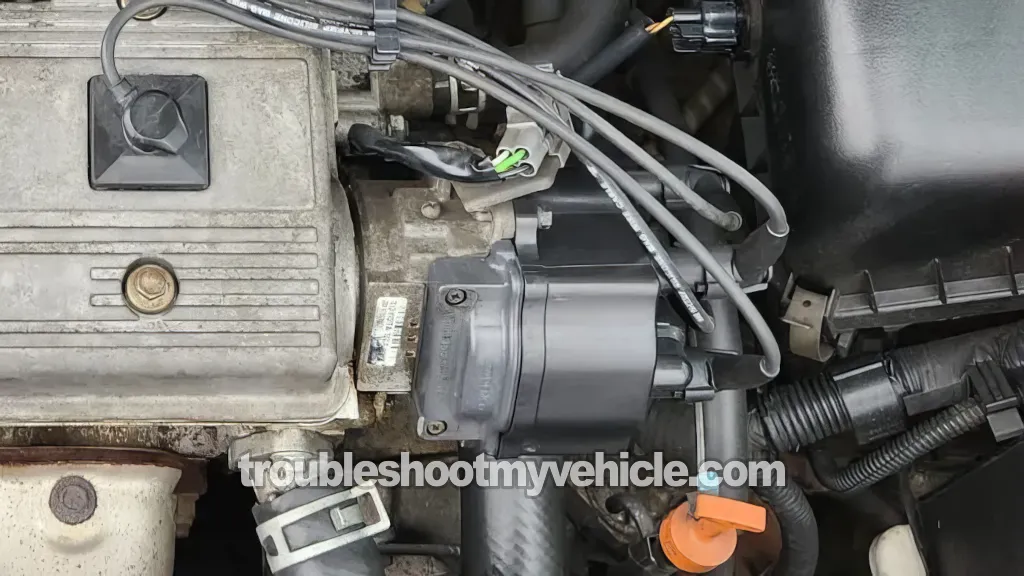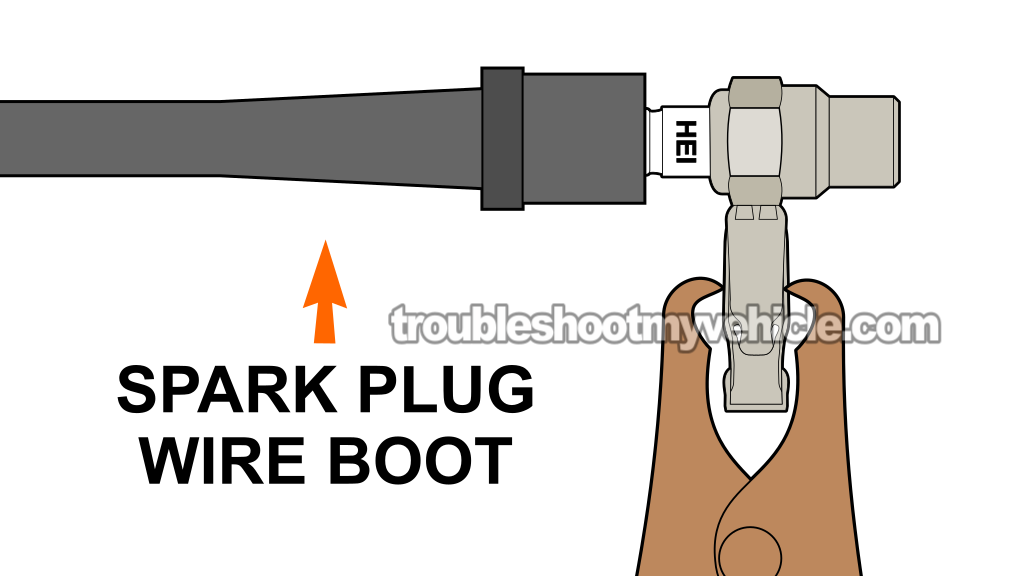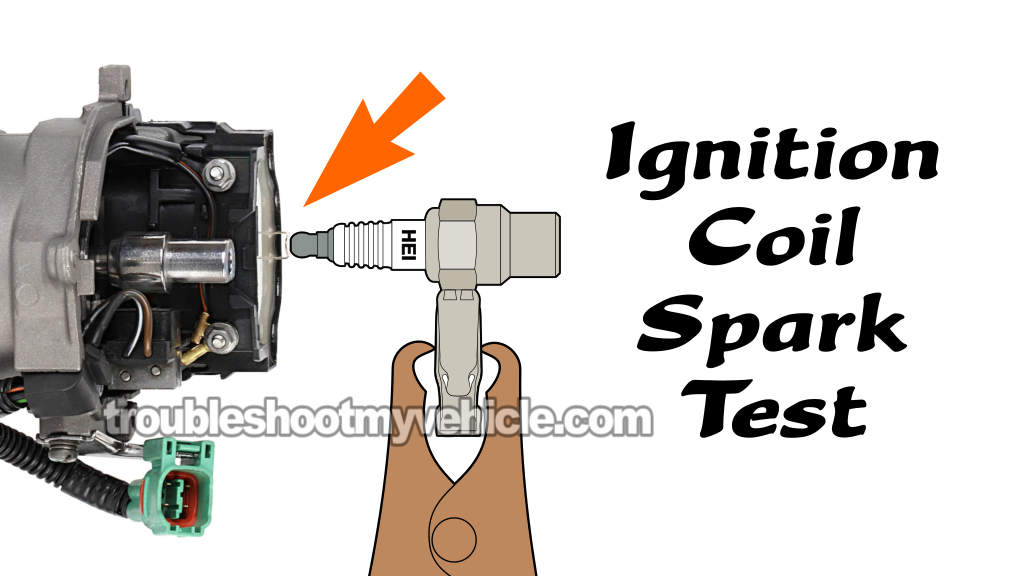
A bad ignition coil is one of the most common things that'll cause the engine to not start. To cool thing is that testing it isn't that difficult.
In this tutorial, I'll walk you through my ignition coil test step-by-step. Your test results will tell you if it's good or if you need to swap it out for a new one.
NOTE: This is an on-car ignition coil test. The images show the distributor removed only to better illustrate the test connections. You don't need to remove it from the engine for any of these tests.
Contents of this tutorial:
- Ignition Coil Basics.
- What Tools Do I Need To Test The Ignition System?
- Where To Buy The Ignition Coil And Save.
- TEST 1: Checking The Spark Plug Wires For Spark.
- TEST 2: Checking The Ignition Coil For Spark.
- TEST 3: Checking The Distributor Cap For Spark.
- TEST 4: Making Sure The Ignition Coil Is Getting Power.
- TEST 5: Making Sure The Ignition Coil Is Getting Its Activation Signal.
- More 1.6L Toyota Corolla Tutorials.
APPLIES TO: This tutorial applies to the following vehicles:
- 1.6L (4A-FE) Toyota Corolla: 1996, 1997.
- 1.6L Geo Prizm: 1996, 1997.
Ignition System Wiring Diagrams:
Ignition System Diagnostic Tests:
- How To Test The Igniter (1996-1997 1.6L Toyota Corolla).
- How To Test The Distributor Pickup Coil (1996-1997 1.6L Toyota Corolla).
- How To Test The CKP Sensor (1996-1997 1.6L Toyota Corolla).
Engine No-Start Diagnostics:
Ignition Coil Test Tutorials:
- How To Test The Ignition Coil (1989-1992 1.6L Toyota Corolla).
- How To Test The Ignition Coil (1993-1995 1.6L Toyota Corolla).
Ignition Coil Basics
Your Corolla's ignition coil is one of the key components of the ignition system used to get the engine running. Its job? Boosting 12 Volts into the high voltage that is turned into a spark (by the spark plug) to ignite the air-fuel mix in the cylinders.
Here's what happens:
- Pickup coil signals: When you turn the key and crank the engine, the pickup coil inside the distributor starts generating two signals —RPM (NE) and crankshaft position (G). These are sent directly to your Corolla's fuel injection computer.
- Computer triggers igniter: After getting these signals, the computer sends an activation signal to the igniter (ignition control module).
- Igniter activates the coil: The igniter then fires up the ignition coil (which is also located inside the distributor).
- Coil generates high voltage: The ignition coil now boosts the 12 Volts it's receiving into a high-voltage charge.
- Distributor cap and rotor distribute the spark: That high voltage moves through the distributor cap and rotor to the spark plugs.
- Spark plug ignites fuel: The high voltage jumps the spark plug gap, turns into a spark, and lights up the air-fuel mix.
- Engine starts up: When all four cylinders get spark and ignite their air-fuel mix, the engine comes to life.
To successfully diagnose the ignition coil (as good or bad), you gotta keep one thing in mind —it needs both battery power and an activation signal from the igniter to work.
If either one's missing, the coil won't spark, and the engine won't start.
What Tools Do I Need To Test The Ignition System?
You'll need three essential tools to test the ignition system on your 1996-1997 1.6L Toyota Corolla:
- Spark tester: This is a must-have tool to get an accurate spark test result. There are plenty to choose from, but I recommend the OTC HEI spark tester. You can check it out and buy it here: OTC 6589 Electronic Ignition Spark Tester (at: amazon.com).
- Multimeter: A multimeter is gonna help you confirm if the ignition coil's getting power (TEST 4). If you don't have one, here's the one I recommend: Tekpower TP8268 AC/DC Auto/Manual Range Digital (at: amazon.com).
- 12V automotive test light: This test light will help you check whether the ignition coil is getting its activation signal in TEST 5. If you need one, this is the one I use and recommend: Lisle 28400 Heavy Duty 12 Volt Test Light (at: amazon.com).
Where To Buy The Ignition Coil And Save
I'm recommending the Standard Motor Products UF204 Ignition Coil as the one you should purchase, since it's a well-known after-market brand. Once you get to amazon. Com thru the links below, you can also choose other brands too!
Disclosure: As an Amazon Associate, I earn from qualifying purchases. If my tutorials help you, using these links is an easy way to support the site at no extra cost to you. Thank you!
NOTE: Not sure if this ignition coil fits your Corolla? No worries! When you click the link and head to the site, they'll ask for your car's details to make sure it matches. If it doesn't, they'll help you find the right one.
TEST 1: Checking The Spark Plug Wires For Spark

To get this show on the road, we're gonna start by checking for spark at each spark plug wire. This'll help us figure out if a lack of spark is really the cause of your Corolla's engine no-start problem.
For the best results, I suggest you use a dedicated spark tester. I recommend the OTC 6589 Electronic Ignition Spark Tester —I use it myself, and it works without having to make any adjustments to it. You can check it out and grab one here: OTC 6589 Electronic Ignition Spark Tester (at: amazon.com).
Alright, let's get to it:
- 1
Pull the spark plug wire off the #1 cylinder's spark plug.
- 2
Plug the spark tester into the spark plug wire.
- 3
Use a battery jump-start cable to Ground the spark tester straight to the battery's negative (-) terminal.
- 4
Have someone crank the engine while you keep an eye on the spark tester.
- 5
You'll get one of two results: Spark or no spark.
- 6
Take the spark tester off the spark plug wire and hook the wire back onto its spark plug.
- 7
Do steps 1 through 6 again for the rest of the spark plug wires.
Here's what your test result tells you:
CASE 1: All four spark plug wires sparked. That's exactly what you wanna see —it means the ignition system isn't why your engine won't start.
You can also rule out these parts:
- The igniter (ignition control module).
- The ignition coil.
- The pickup coil (inside the distributor).
- The distributor cap and rotor.
- The spark plug wires.
If the engine still won't start, the issue isn't with the ignition coil or ignition system.
CASE 2: Some, but not all, spark plug wires sparked. This usually means the wires that didn't spark are bad, or the distributor cap is shot.
To dig deeper, go to: TEST 3: Checking The Distributor Cap For Spark.
CASE 3: None of the spark plug wires sparked. That means the engine won't start 'cause there's no spark at all.
Next, we gotta see if the ignition coil itself is sparking. Head over to: TEST 2: Checking The Ignition Coil For Spark.
TEST 2: Checking The Ignition Coil For Spark

As you're already aware, the ignition coil sits inside the distributor and sends the spark straight to the distributor cap.
From there, the cap directs the spark to the rotor, which then passes it to the metal terminals inside the cap.
Next, the spark travels through the distributor cap towers, into the spark plug wires, on its way to its final destination —the spark plugs.
Now, we're gonna pull off the distributor cap and check for spark right at the ignition coil with our spark tester.
- If the ignition coil sparks: The problem is likely a bad distributor cap or rotor, stopping the engine from starting.
- If there's no spark: We'll move on to TEST 4 to continue our ignition coil diagnostic.
IMPORTANT: While you're cranking the engine during your spark test, the distributor rotor should be turning. If it's not, the timing belt is broken —and that's what causing your engine no-start problem.
Alright, these are the test steps:
- 1
Take off the distributor cap from the distributor.
NOTE: The distributor needs to stay connected to its electrical connector. - 2
Attach the spark tester to the ignition coil's metal terminal.
NOTE: The spark tester might slip off while cranking the engine, so it's a good idea to wrap them together with black electrical tape. This will keep the spark tester making a solid metal-to-metal contact with the coil's metal terminal. - 3
Use a jump-start cable to Ground the spark tester to the battery's negative (-) terminal.
- 4
Have someone crank the engine while you keep an eye on the spark tester.
- 5
You'll see one of two results: Spark or no spark.
Here's what your test result means:
CASE 1: The spark tester sparked. That's the correct test result.
If you've confirmed that:
- None of the four spark plugs sparked (TEST 1).
- The ignition coil is sparking (this test section).
Then the reason the spark plug wires aren't sparking is due to a bad distributor cap or rotor, and they need to be replaced.
If the spark plug wires are just as old as the distributor cap and rotor, it's a good time to swap them out too.
CASE 2: The spark tester DID NOT spark. No spark usually points to one of these problems:
- The ignition coil is bad.
- The ignition coil isn't getting power.
- The ignition coil isn't receiving its activation signal from the igniter.
For our next test, we'll make sure the ignition coil is getting voltage. Head over to: TEST 4: Making Sure The Ignition Coil Is Getting Power.


